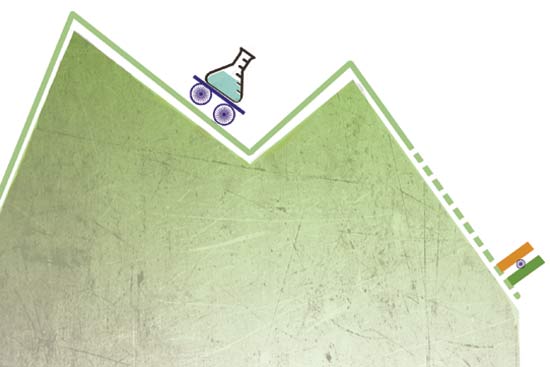Winston Churchill once wrote, “I have never let my schooling interfere with my education.” Ironically, Churchill’s observation applies, if anything, most profoundly to our system of professional education today. Professional colleges sit at the apex of India’s system of ‘higher education’—one of the largest in the world. A network of around 18,000 universities and colleges churn out in excess of 15 million students a year; third only to the United States and China. Only a tenth of this number takes up a professional degree, with a vast 70 per cent of the college population opting for vanilla bachelor degrees (BA, BSc and BCom).
So we might reasonably expect the engineers, doctors and scientists, who constitute the creme de la creme of this enormous mass, to be of exceptional calibre. The truth, however, is less than palatable. A recent survey by HR professionals estimated that less than one in four engineering graduates from over 1,400 engineering colleges were employable by industry, irrespective of the demand. These and several other reports have all repeatedly cited a serious shortfall of both knowledge and application in engineering and medical graduates, combined with poor English language skills.
A syllabus—and ‘portions’—dominated instruction, the stress on rote memory over understanding and theory over practice have reduced our professional colleges to little more than an extension of our disastrous primary and secondary school system. What can then be done? I am going to propose an idea: radically de-school and re-skill professional education in our country. Cut the theory elements significantly in favour of applied work and training, with each taking up equal weight in the entire curriculum. The results can be surprising.
Let me give an example from my own experience. I run a company that carries out, among other things, applied R&D in certain types of composite materials. Many of the products we work with are in markets traditionally dominated by large companies with established R&D teams. Yet, in these very same areas, we have over the years developed products that can be truly termed ‘firsts of their kind’ globally. Remarkably, many of these developments have emanated in our company from people who have either a basic science degree or just a high school science education—some of them from the local villages and small towns around Mysore.
How is this possible? The answer lies in a passion for experimental learning. Over the years, these boys have conducted thousands of experiments in countless permutations and combinations of our basic building blocks—polymers, chemicals, fibres and the like—in their pursuit of new composite materials. Lest this be mistaken for pure grunt work, let me add that such experimentation is always informed by basic theory, whether gleaned from books or from the academic world.
The result is a deep intuitive feel for the behaviour of these materials and their interactions which, when combined with lateral thinking and the creative impulse, leads to some startling innovation. The team that recently developed a breakthrough battery separator material in our company—the first of its kind globally—was headed by a man with just a diploma, assisted by two others with high school science qualification.
It is no one’s argument that such a model is applicable universally to all fields, but at the very least it points to the power of practice, and of the thoughtful application of such practice to the workplace. It also points to a solution: involving potential employers in providing the practice, through an apprenticeship of two years built into the typical four-year programme. The visionary architect Buckminster Fuller once said, “I’m not a genius. I’m just a tremendous bundle of experience.” The mandarins who direct our education system would do well to reflect on his words. It is time to de-school and re-skill our professional education.
Article Link : http://www.outlookindia.com/magazine/story/lets-do-it-this-way/265852






